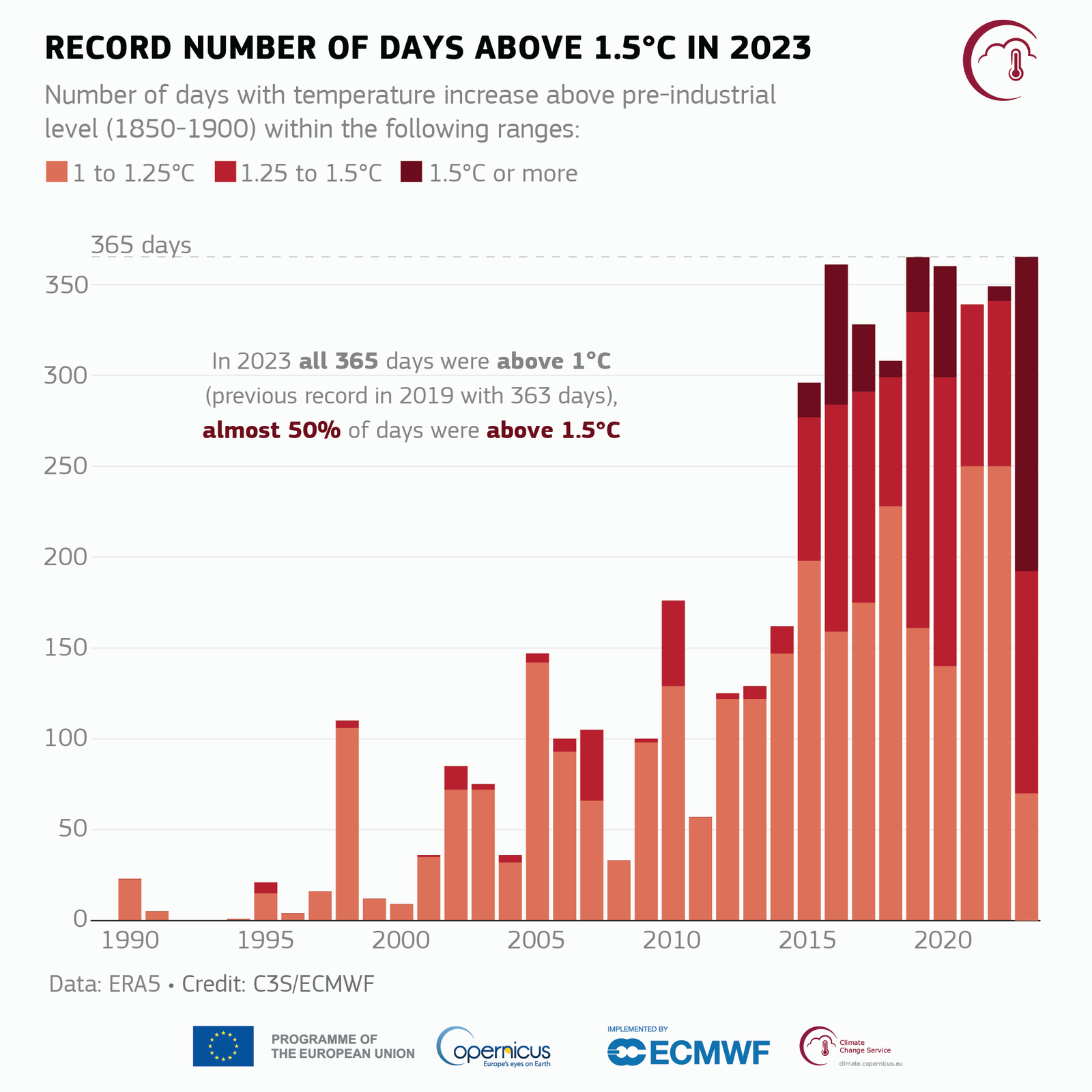2023 is confirmed as the warmest calendar year in global temperature data records going back to 1850, the Copernicus Climate Change Centre (C3S) has said in its 2023 Annual Climate Summary. The report also said that the 12-month period ending in January or February 2024 will likely exceed 1.5 degrees Celsius above the pre-industrial level shattering the goal of the Paris Agreement 2015 to limit global warming by 1.5 degrees Celsius.
The European climate centre also declared that all days of 2023 had global temperatures more than 1 degrees Celsius warmer than the 1850-1900 level for that time of year. For the first time, two days were more than 2 degrees Celsius warmer than 1850-1900 level and almost 50 per cent of days were in excess of 1.5 degrees Celsius warmer.

Scientists at C3S stated that the temperatures in 2023 was seen as being inevitable in due course due to a combination of continued climate warming and an occurrence of El Niño. They said that the World Meteorological Organization (WMO) has reported in 2022 that decadal forecasts estimated there was a 48% chance that the global temperature would exceed 1.5°C above the pre-industrial level in at least one year between 2022 and 2026. That chance was increased to 66% for the period 2023-2027 in an updated report published in 2023.
The report also pointed out that the change in annual temperature from 2022 to 2023 was larger than any change from one year to the next in the ERA5 data record. 2023 is also unusual in that its record temperature is for a year in which the El Niño was building up rather than declining, it added.
C3S’ Annual Climate Summary further laid out that 2024 could be warmer than 2023, as recently forecasted, with an average temperature in excess of 1.5°C above the pre-industrial level.


